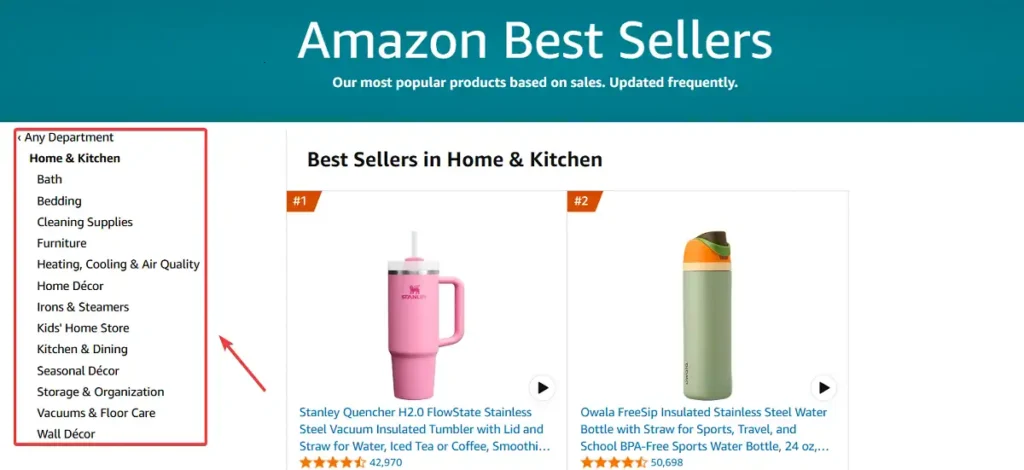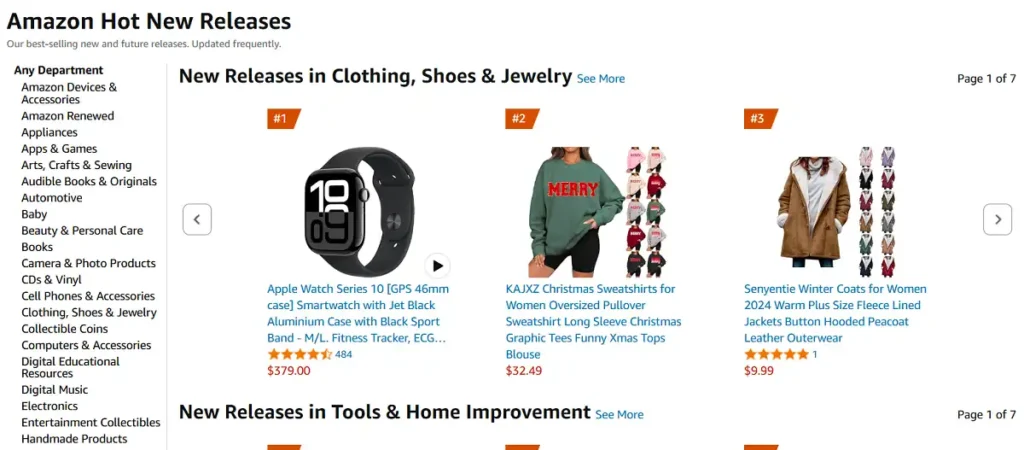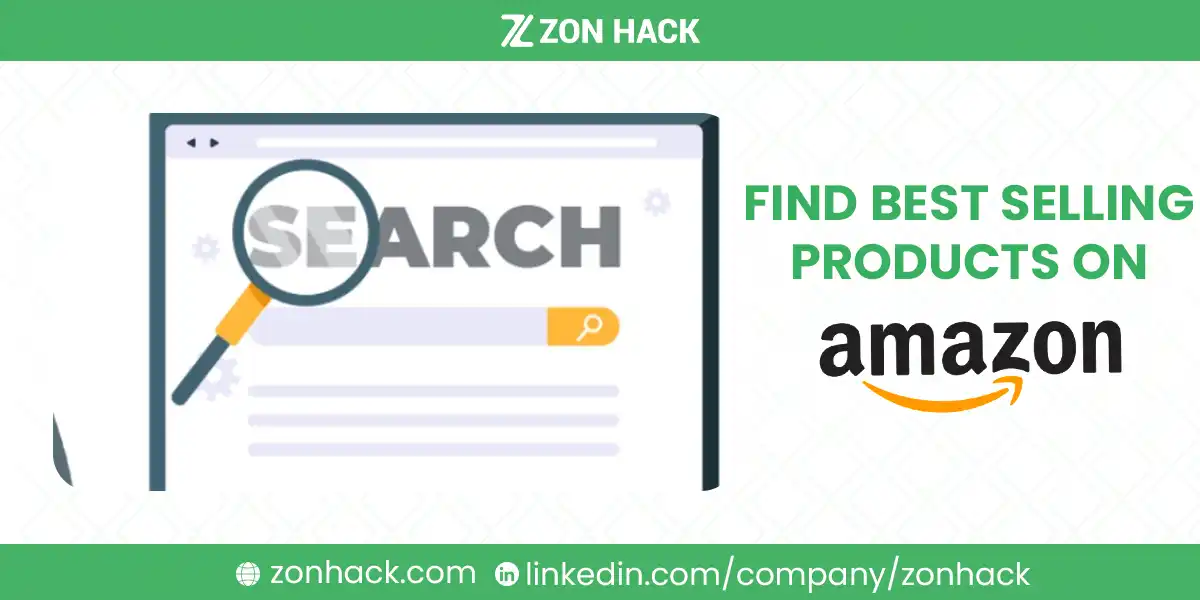Finding best-selling products on Amazon doesn’t have to cost a dime. With the right strategies, you can tap into Amazon’s built-in tools, analyze top-performing sellers, and even use free extensions to uncover winning products. This guide explains how to do it step by step, making product research approachable, insightful, and effective for everyone, from casual sellers to aspiring entrepreneurs.
How Amazon’s Ecosystem Can Be Used for Product Research
Amazon is a massive marketplace driven by algorithms and customer behavior. Products on the platform compete within categories, with each item’s performance influencing its ranking. The platform uses tools like the Best Sellers Rank (BSR) to show which products sell most often, while features like the Movers & Shakers page track rising stars.
But what makes this relevant? Whether you’re looking to sell your first item or expand your product line, these features can guide you toward popular and profitable items. Even if you’re working on a tight budget, Amazon offers plenty of ways to research products without relying on expensive tools.
Methods to Identify Best-Selling Products on Amazon for Free
Amazon’s Built-In Features: Your First Stop
Amazon provides several built-in tools for sellers to explore the platform’s top products. Here’s how to use them effectively:
1. The Best Sellers Page
The Best Sellers Page is the goldmine of Amazon’s top-performing items. Organized by category, this page updates hourly to reflect real-time sales trends. By visiting amazon.com/bestsellers, you can dive into categories like home goods, electronics, or toys and uncover what’s moving off the shelves.

For example, if you’re exploring the kitchen category, you might notice that air fryers consistently appear in the top spots. This tells you there’s consistent demand for these products.
2. Movers & Shakers
This section, found under the Best Sellers tab, highlights products that have experienced the most dramatic sales rank changes in the last 24 hours. It’s perfect for spotting trends. A quick check might reveal that a particular style of yoga mat has skyrocketed in popularity, signaling a potential opportunity.
3. New Releases List
If you’re looking for a chance to catch products before they get saturated, the New Releases page is invaluable. For example, during the holiday season, newly released gadgets or toys often shoot to popularity. This page lets you identify them early.

4. Product Sales Rank (BSR)
You’ll find the BSR on product detail pages, typically under the “Product Details” section. A lower BSR means higher sales volume. For instance, a product ranked #10 in its category is selling significantly more than one ranked #5,000.
Researching Seller Storefronts and Listings
If you’ve ever wondered what makes certain sellers successful, their storefronts can provide the answers.
1. Visit Seller Storefronts
Go to the storefronts of top sellers in your chosen niche. Examine their product catalog and spot trends. If a seller is offering variations of a product, such as packs of 3 or bundles, it’s a sign that those combinations are in demand.
2. Analyze Listings for Clues
Pay attention to listings with strong reviews and high rankings. Look for products that:
- Have multiple variations (different colors, sizes, or bundles).
- Use basic or unpolished images—this could mean an opportunity to outperform with better branding.
A good example? A vitamin bundle with plain images might indicate an opening for a more visually appealing listing at a competitive price.
Leverage Social Media and Other Platforms
Amazon trends often spill over to social media and alternative e-commerce sites.
1. Trending Hashtags on Social Media
Platforms like TikTok and Instagram are hotspots for spotting viral products. Use hashtags like #AmazonMustHaves or #AmazonFinds to explore trending items. For instance, in 2023, weighted blankets and portable blenders trended heavily on TikTok, leading to significant sales spikes on Amazon.
2. Explore Niche Marketplaces
Websites like Etsy offer insights into unique or handmade products. Cross-check items trending on Etsy against Amazon to determine their sales potential. This can lead to ideas for sourcing or even creating similar products.
Free Tools and Extensions to Simplify Research
Even without paid tools, browser extensions can offer valuable insights:
- SellerAmp QVS: Provides data like BSR, review counts, and estimated dimensions directly from Amazon’s search results.
- Capital One Shopping Extension: Although primarily for finding discounts, this tool can reveal hidden opportunities by showing price histories and trends.

Tips for Better Product Selection
Successful sellers often focus on problem-solving products—items that fulfill specific needs. Products like reusable water bottles or noise-canceling headphones solve common issues and tend to sell consistently.
Another tip? Look for ways to differentiate your product, whether by improving its design, adding extra features, or bundling it with complementary items.
Avoiding Common Mistakes
Don’t get caught up in trends without validating demand. Some products spike temporarily but don’t sustain their popularity. Similarly, avoid products restricted by Amazon policies or requiring ungating, especially if you’re new to selling.
FAQs
How often is Amazon’s Best Sellers page updated?
The Best Sellers page updates hourly, reflecting the most recent sales trends.
What’s the difference between Movers & Shakers and Best Sellers?
Movers & Shakers highlight products with the largest sales rank improvements, while Best Sellers show consistent top performers.
Is using Amazon’s free tools enough to succeed?
While free tools are a great start, supplementing them with market validation (e.g., Google Trends) can help ensure better results.
Final Words
Finding the best-selling products on Amazon for free is entirely possible with the right approach. By using Amazon’s built-in tools, analyzing seller storefronts, and leveraging free extensions, you can identify products with high demand and profitability. Whether you’re just starting or looking to refine your product lineup, these methods provide a solid foundation for success.
Start exploring today—you might uncover your next big seller!




